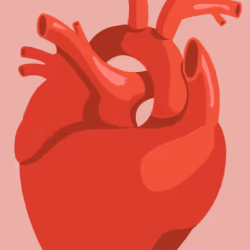Cardiovascular diseases (CVDs) are the leading cause of death worldwide, claiming approximately 17.9 million lives annually. These diseases affect the heart and blood vessels and encompass conditions such as coronary heart disease, cerebrovascular disease, and rheumatic heart disease, among others. Heart attacks and strokes account for over 80% of CVD-related deaths, with one-third occurring prematurely in individuals under 70 years old.
Several key behavioural and environmental factors contribute to the development of CVDs. The major behavioural risk factors include an unhealthy diet, physical inactivity, tobacco use, and harmful alcohol consumption. Environmental risk factors, particularly air pollution, also play a significant role. The impact of these behaviours often manifests through intermediate risk factors such as elevated blood pressure, blood glucose, and blood lipids, as well as overweight and obesity. These intermediate risk factors can be identified in primary care settings, helping to determine an individual’s likelihood of experiencing a heart attack, stroke, heart failure, or other cardiovascular complications.
To reduce the risk of CVDs, various lifestyle changes are recommended, such as quitting tobacco use, reducing salt intake, increasing consumption of fruits and vegetables, engaging in regular physical activity, and limiting alcohol consumption. Additionally, health policies that promote healthier environments—making healthy choices more accessible and affordable—and improving air quality are crucial for encouraging long-term behavioural changes.
Preventing premature deaths from CVDs also requires identifying individuals at the highest risk and providing them with appropriate treatment. Ensuring access to essential medicines and basic health technologies in primary healthcare facilities is vital to managing CVD risk effectively and offering treatment and counselling for those in need.
Atherosclerosis is the primary pathological process underlying coronary heart disease (leading to heart attacks) and cerebrovascular disease (leading to strokes). This condition involves chronic inflammation and lipid accumulation in medium- and large-sized arteries, contributing to reduced blood flow and potential vessel blockage. Atherosclerosis begins early in life and progresses over decades. Its complications—plaque rupture and thrombosis—are the basis for life-threatening events such as heart attacks and strokes. Preventive strategies targeting risk factors and promoting vascular health are critical to reducing the global burden of cardiovascular disease.

Pathogenesis of Atherosclerosis
- Initial Trigger:
Damage to the endothelium (inner lining of blood vessels) occurs due to:- Elevated LDL cholesterol levels.
- Oxidative stress (e.g., free radicals).
- Other risk factors like hypertension, smoking, and diabetes.
- Immune Response:
- The damaged endothelium becomes permeable, allowing immune cells such as lymphocytes and monocytes to infiltrate.
- Monocytes engulf LDL cholesterol, becoming foam cells, and form fatty streaks.
- Plaque Formation:
- Smooth muscle cells migrate to the site, secreting collagen and forming a fibrous cap over the fatty core.
- Over time, these atheromatous plaques enlarge, encroaching into the vessel lumen.
- Plaque Instability:
- Continued inflammation leads to thinning of the fibrous cap and eventual plaque rupture.
- The rupture exposes thrombogenic substances, triggering thrombus (blood clot) formation.
Heart Attack (Myocardial Infarction)
- Mechanism:
- A thrombus forms at the site of a ruptured coronary plaque, obstructing blood flow to heart muscle.
- Oxygen and nutrient deprivation cause ischemia, leading to chest pain (angina).
- Prolonged ischemia damages heart muscle, resulting in a heart attack.
Stroke
1. Ischemic Stroke:
- Cause: Thrombus formation in atherosclerotic cerebral vessels or embolism from other locations (e.g., the heart).
- Result: Reduced blood flow to the brain, leading to neuronal death and ischemic injury.
- Small Vessel Disease: Associated with chronic hypertension and diabetes.
2. Hemorrhagic Stroke:
- Cause: Rupture of a cerebral blood vessel due to:
- Uncontrolled high blood pressure.
- Presence of aneurysms.
- Atherosclerosis weakening the vessel wall.
- Result: Bleeding into brain tissue, causing direct damage and increased intracranial pressure.
Risk Factors
Key contributors include:
- Lifestyle Factors: Tobacco use, poor diet, physical inactivity, and harmful alcohol use.
- Medical Conditions: Hypertension, diabetes, dyslipidemia, and obesity.
- Demographic/Genetic Factors: Advancing age, male gender, poverty, low education, and family history.

aggregation on the endothelial surface













